To get a DRIVER'S LICENSE in the Philippines, you need to pass the LTO (Land Transporatation Office) Driver's License Exam. And part of that exam is identifying the traffic signs and road signs in the Philippines. If you want to pass the exam and get a high score, you need to study the common traffic/road signs in the Philippines. These traffic signs are the signs that you see installed at the side or above the road. Be aware of these signs when you drive or travel in the road.
You can bookmark this page for future reference.
You can bookmark this page for future reference.
The Philippines follows its rules towards traffic and road signs from the Vienna Convention on Road Signs and Signals, alongside with other countries such India, Greece and Italy.
The Vienna Convention on Road Signs and Signals is an international treaty designed to increase road safety and aid international road traffic by standardizing the signing system for road traffic (road signs, traffic lights, and road markings) in use internationally.
The Convention classify all road signs into a number of categories:
- DANGER WARNING SIGNS
- PRIORITY SIGNS
- PROHIBITORY OR REGULATORY SIGNS
- MANDATORY SIGNS
- INFORMATION, FACILITIES OR SERVICE SIGNS
Here's a huge list of traffic signs in the Philippines.
Danger Warning Signs
Warning signs can indicate any potential hazard, obstacle or condition requiring special attention.
 - Warning Sign
- Warning Sign - Congestion Sign
- Congestion Sign - Crossroad Sign
- Crossroad Sign - Y-Junction Sign
- Y-Junction Sign - Traffic Circle Sign
- Traffic Circle Sign - Two-way Traffic Sign
- Two-way Traffic Sign - Gentle Curve Signs
- Gentle Curve Signs - Sharp Curve Signs
- Sharp Curve Signs - Hairpin Curve Signs
- Hairpin Curve Signs - Winding Road Signs
- Winding Road Signs - Combined Curve Signs
- Combined Curve Signs - Lane Ends Signs
- Lane Ends Signs - Traffic Signal Ahead Sign
- Traffic Signal Ahead Sign - Traffic Control Stop Ahead Sign
- Traffic Control Stop Ahead Sign - Pedestrian Crossing Sign
- Pedestrian Crossing Sign - Pedestrian Sign
- Pedestrian Sign - Farm Animals Signs
- Farm Animals Signs - Narrow Bridge Signs
- Narrow Bridge Signs - Hump Sign
- Hump Sign - Slippery Road Sign
- Slippery Road Sign - Falling Rocks Sign
- Falling Rocks Sign - Reduced Visibility Sign
- Reduced Visibility Sign - Electric Shock Sign
- Electric Shock Sign - Sharp Curve Chevron Signs
- Sharp Curve Chevron Signs - Sharp Curve Signs
- Sharp Curve Signs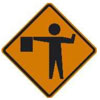 - Flagman Ahead Sign
- Flagman Ahead Sign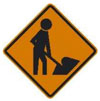 - Men At Work Sign
- Men At Work SignPriority Signs
Priority traffic signs indicate the order in which vehicles should pass intersection points. Common examples of these are:
 - Stop Sign
- Stop Sign - Go Sign
- Go Sign - Yield Sign
- Yield Sign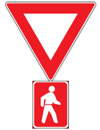 - Yield to Pedestrian Sign
- Yield to Pedestrian Sign - No Entry Sign
- No Entry Sign - Yield to Oncoming Traffic Sign
- Yield to Oncoming Traffic Sign - One-Way Roadway Signs
- One-Way Roadway SignsProhibitory or Regulatory Signs
Prohibitory traffic signs are used to prohibit certain types of maneuvers or some types of traffic. Common examples are:
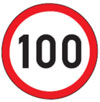 - Speed Limit Sign
- Speed Limit Sign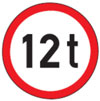 - Mass Limit Sign
- Mass Limit Sign - Height Restriction Sign
- Height Restriction Sign - Length Restriction Sign
- Length Restriction Sign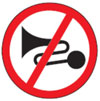 - Excessive Noise Prohibited Sign
- Excessive Noise Prohibited Sign - Unauthorized Vehicles Prohibited Signals
- Unauthorized Vehicles Prohibited Signals - No Left Turn Sign
- No Left Turn Sign - No Right Turn Sign
- No Right Turn Sign - Left Turn Ahead Prohibited Sign
- Left Turn Ahead Prohibited Sign - Right Turn Ahead Prohibited Sign
- Right Turn Ahead Prohibited Sign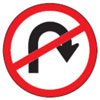 - No U-Turn Sign
- No U-Turn Sign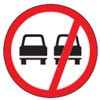 - Overtaking Prohibited Sign
- Overtaking Prohibited Sign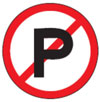 - No Parking Sign
- No Parking Sign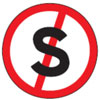 - No Stopping Sign
- No Stopping Sign - No Pedestrian Allowed
- No Pedestrian Allowed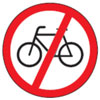 - No Bicycle or Pedal Cycle Allowed
- No Bicycle or Pedal Cycle Allowed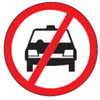 - No Taxi Allowed
- No Taxi Allowed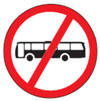 - No Bus Allowed
- No Bus AllowedMandatory Signs
Mandatory signs are road signs which are used to set the obligations of all traffic which use a specific area of road. Unlike prohibitory or restrictive signs, mandatory signs tell traffic what is must do, rather than must not do. Common examples are: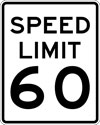 - Minimum Speed Sign
- Minimum Speed Sign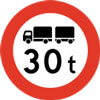 - Maximum Gross Weight Sign
- Maximum Gross Weight Sign - Keep Left Sign
- Keep Left Sign - Keep Right Sign
- Keep Right Sign - Pedestrians Only Sign
- Pedestrians Only Sign - Taxi Only Sign
- Taxi Only Sign - Bus Only Sign
- Bus Only Sign - Pay Toll Sign
- Pay Toll Sign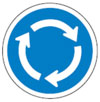 - Roundabout Sign
- Roundabout Sign - Switch Head Lamps On Sign
- Switch Head Lamps On SignInformation, Facilities or Service Sign
Service Signs are those that indicates a specific facility by which many can find useful, especially those that can be used for medical purposes, security, and food. Common examples are:
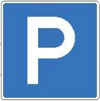 - Parking Area Sign
- Parking Area Sign - Hospital Sign
- Hospital SignOther Traffic or Road Signs
You can also study the traffic signs below. These are the International Standard Signs:
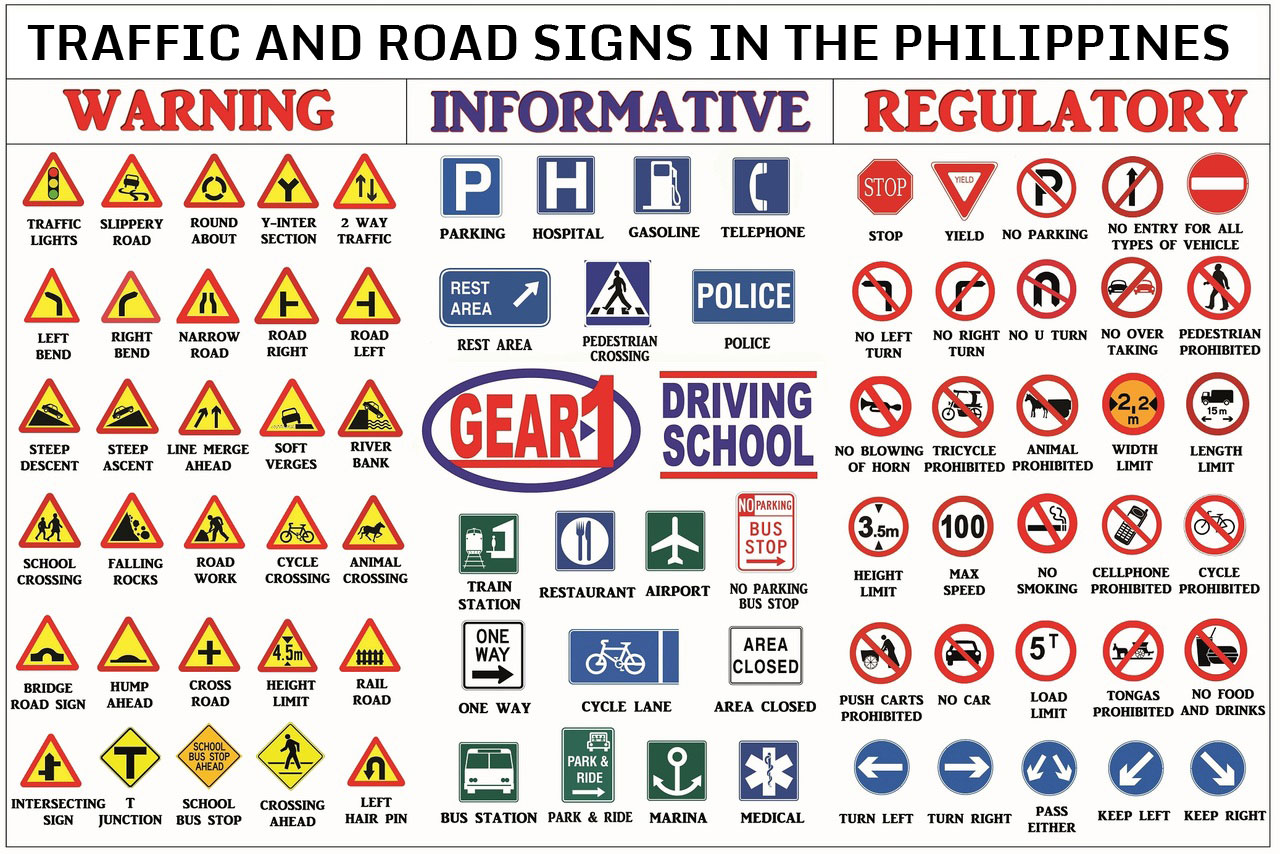
You can download or save this image to your computer by right-clicking on the image and click Save Image as...
Do you have any problem identifying the traffic signs in the Philippines? Or do you know other traffic or roads signs not included above. Let us know in the comment below.
- https://www.affordablecebu.com/